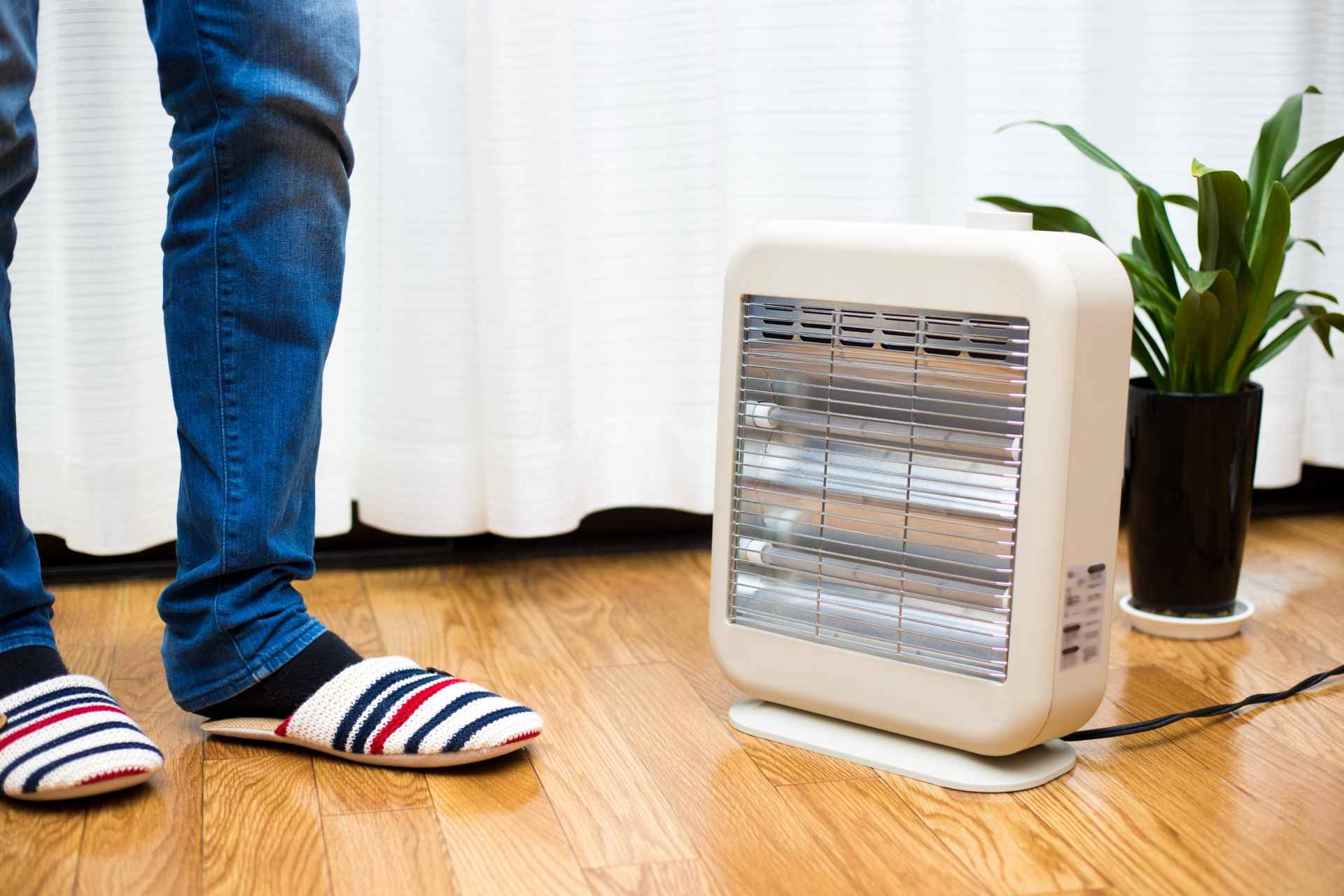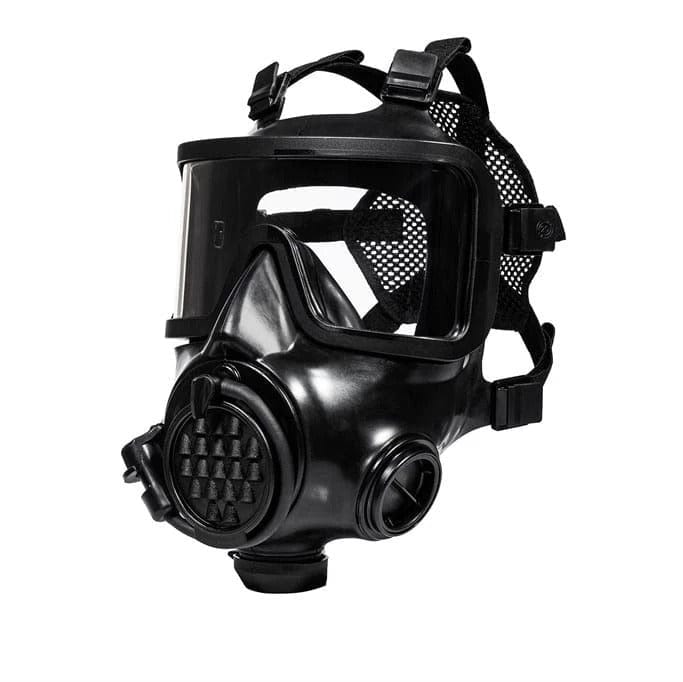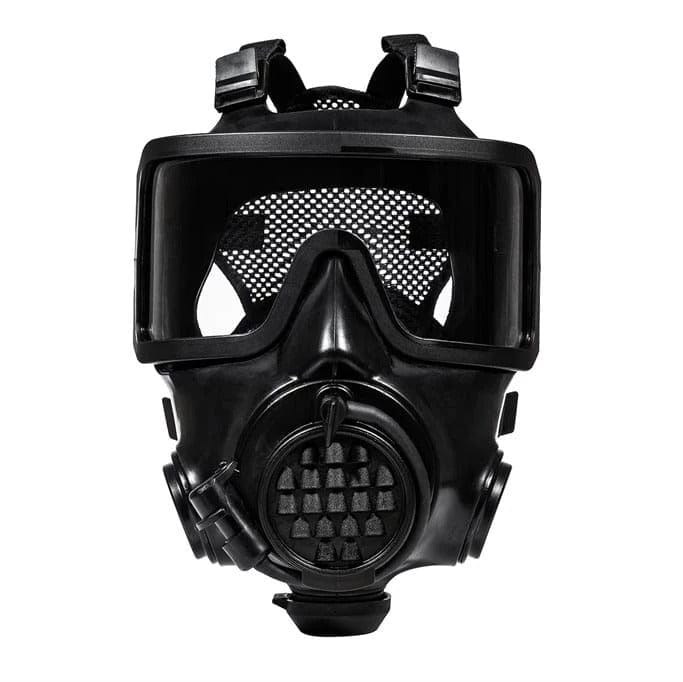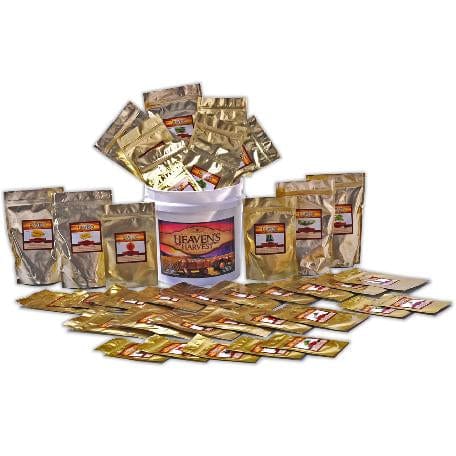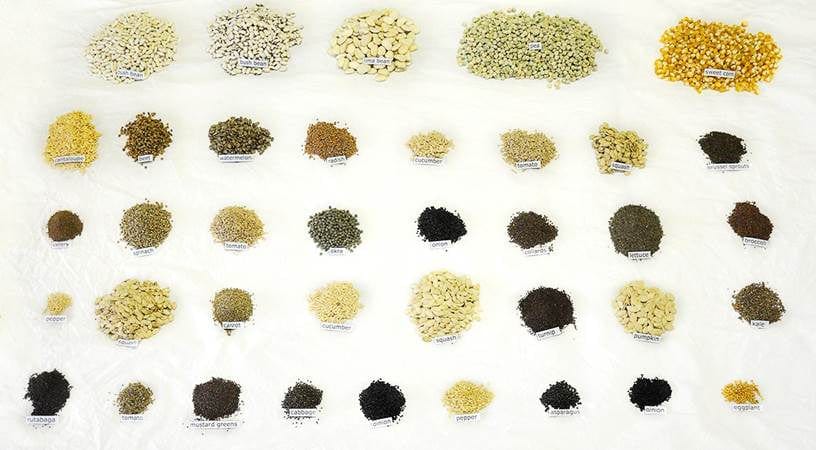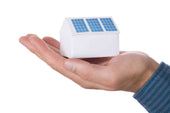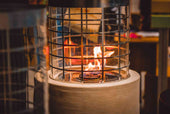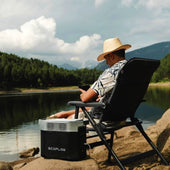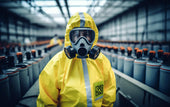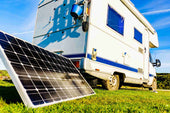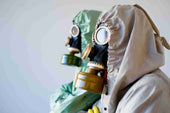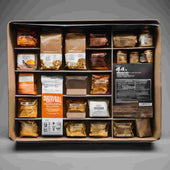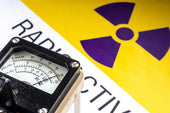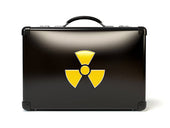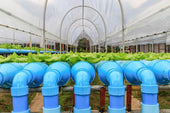Propane indoor heaters are becoming popular as an efficient, portable heating solution for residential and commercial use. They are convenient alternatives to electric indoor heaters and can provide warmth in areas without central heat or during power failures. However, safety is always a concern with these heating devices.
This article is a complete guide explaining indoor propane heaters, how they work, the modern features accompanying them, the most common safety concerns, and the best practices for using them.
Thus, users can enjoy propane heaters while trying to be as safe as possible by making decisions based on facts rather than a vague anecdote from someone who never explained what happened.
How Propane Heaters Work
You must learn how propane heaters work to explore their benefits and safety.
This section also covers the technical aspects of portable indoor propane heaters as a fuel, a breakdown of the elements involved in these heaters, and the distinction between vented and vent-less heaters.

Propane as a Fuel Source
- Energy Efficiency: Propane generates more heat per unit than most of the fuels currently in use.
- Clean Combustion: This emits relatively less greenhouse gases than other fossil fuels.
- Versatility: It is used in portable and stationary heaters, which means this heat can remain quite versatile.
Components of an Indoor Propane Heater
Modern indoor propane heaters undergo engineering techniques, making them efficient and safe. The critical components include:
- Burner: The burner is that part of the system within which the propane gas comes into contact with oxygen to cause ignition and produce a constant flame. This heat is formulated and circulated into the surrounding space through convection or radiation.
- Regulator: It regulates the amount of flammable gas in the tank and sends it to the burner. It also maintains a fixed heat-giving rate to minimize fuel use and heat generation.
- Safety Features: The contemporary systems are designed to reduce the possibility of accidents, for instance:
►Tip-Over Switches: Modern urine heaters automatically switch off once they fall.
►Oxygen Depletion Sensors (ODS): The controller should monitor air quality and turn off the heater if the oxygen supply of the electric indoor heater is low.
►Overheat Protection: It also prevents the heater from reaching dangerously high temperatures that it is not supposed to reach.
Vented vs. Vent-Free Propane Heaters
The main types of propane heaters include radiant heaters, fan-forced heaters, unit heaters, pipe heaters, radiant wall heaters, and blower heaters; the fundamental differences between them are the following:

Vented Heaters
-
How They Work: Vented heaters use a venting system or chimney to expel combustion products such as carbon monoxide and water vapor from the home.
-
Best For Long-term usage as installations on houses, basements, garages, or workshops.
-
Advantages: Safer for air quality since the building releases emissions.
-
Drawbacks: An external vent is the equipment and features that must be installed and accessible.
Vent-Free Heaters
-
How They Work: These heaters employ complete combustion technology to reduce energy costs and emissions. Thus, they are appropriate for spaces without outside ventilation.
-
Best For: For short-term or portable use, especially in adequately ventilated indoor environments.
-
Advantages: Convenient to transport, straightforward, and considerably energy-saving in that there are no outlets and, therefore, no heat loss.
-
Drawbacks: Needs to be employed with a degree of care in confined areas because of air pollution issues.
Common Concerns About Propane Heaters
As useful and effective as propane heaters may be in heating indoor spaces, they have particular safety issues that the user should consider.
Potential dangers include fire, emission, carbon monoxide poisoning, and ventilation; therefore, it is important to understand how to prevent such occurrences when using the stove.

❗ Carbon Monoxide (CO) Emissions
Carbon monoxide is a colorless, odorless gas that can be deadly. Propane is produced during the combustion process, especially when propane doesn’t burn properly. Modern propane heaters are designed to reduce CO emissions, but improper use or poor ventilation can still be very dangerous.
Why CO Emissions Matter:
-
Health Risks: Prolonged CO exposure can cause dizziness, nausea, confusion, and, in extreme cases, death.
-
Invisible Threat: If proper safety measures are not taken around propane heaters, CO buildup can occur without warning, so a CO detector is important wherever you have one.
Factors That Contribute to CO Build-Up:
-
Incomplete Combustion: If the burner is dirty or the heater isn’t working properly, the propane might not burn completely, generating more CO.
-
Poor Ventilation: When CO accumulates to unsafe levels, it can trap in enclosed spaces with poor airflow and breathe in high levels of CO from inadequate airflow.
-
Extended Use: Plenty of subs could run heaters for long periods without breaks and with that risk of CO saturation.
Safety Tips:
- Heaters should always be operated in well-ventilated areas.
- And install carbon monoxide detectors near the heater.
- Check and clean the burner regularly to ensure proper combustion.
❗ Fire Hazards
Improper use of propane heaters is hazardous, as it can lead to fires, endangering property and lives. Understanding the potential risks and knowing how to safeguard yourself is crucial.
Key Risks:
-
Proximity to Flammable Materials: Curtains, furniture, and rugs, among others, may catch fire if they are too close to the heater.
-
Faulty Ignition Systems: Ignition failure poses a fire threat if gas accumulation occurs before ignition.
-
Overheating: Prolonged use at elevated temperatures can cause them to overheat, resulting in fires.
Prevention Measures:
-
Keep the distance at least three feet from the heater.
-
Install heaters on the level and noncombustible surfaces to avoid hoped or tripping and accidental sparks.
-
Do not leave any heaters on while you are not around the house or children and pets.
❗ Ventilation Issues
Propane heater safety requires proper airflow, as in other heater kinds or models. It helps to avoid the increase in emission of dangerous combustion products such as carbon monoxide and provides constant oxygen flow for correct combustion.
Challenges with Ventilation:
- Vent-Free Heaters: Although these heaters are intended for indoor use without external exhausts, some airflow is necessary to keep the air clean.
- Small Spaces: Poor air circulation may be a major explanation for failing to disperse emissions in hermetically sealed rooms or areas without windows.
Myths and Facts About Vent-Free Heaters:
-
Myth: There is evidence that vent-free heaters are dangerous for indoor use.
-
Fact: Nowadays, vent-free heaters include sensors, such as oxygen depletion, that automatically turn off the heater if the oxygen level decreases.
Best Practices for Ventilation:
-
Open a window or turn on an exhaust fan using a propane heater.
-
In enclosed areas, specifically, do not use heaters for an extended time to prevent suffocation.
-
For comfort, use the vent-free heaters with other devices for air quality.
❗ Propane Leaks
Lack of oxygen is another hazard associated with propane heaters, but propane leaks remain one of the biggest risks associated with propane indoor heaters. Propane is highly flammable, and if a leak is detected but not combatted, it poses a high risk of fire or an explosion at any time.
Causes of Propane Leaks:
-
Faulty Connections: Freely moving or broken joints between the propane tank and the heater also cause fuel leakage.
-
Damaged Tanks: Tanks that have remained in use for some years, are badly rusted, punctured, or have been put under very harsh weather and may, at times, have some cracks or weak points.
Signs of a Propane Leak:
-
Distinct Odor: Propane handlers and manufacturers add ethyl mercaptan as an odorant. It smells like rotten eggs or sulfur.
-
Hissing Sounds: A sound like hissing or whistling near the tank or connections is possibly the best evidence of a leaking gas.
-
Frost on the Tank: When propane leaks, it cools the surrounding air and causes frost since propane is below the freezing point.
Immediate Actions if a Leak is Suspected:
-
After turning off the heater, the propane tank valve should be closed quickly to prevent the gas from circulating.
-
If infested, one should open windows and doors to facilitate airflow in that area to minimize exposure.
-
Avoid using switches or naked flames, which would cause a gas explosion.
-
Inform a professional technician or your propane supplier to check it and make a necessary repair of the leakage.
Preventative Tips for Avoiding Leaks:
-
Propane tanks and connections should be checked for wear and weak points at least every week.
-
As mentioned above, use a soap and water solution, as bubbles will form in the general area of a leak.
-
They should also be handled carefully, especially when storing and transporting them from one place to another.
Safety Features of Modern Propane Heaters
Today’s propane heaters have safety features that protect the user and environment in case of an accident.
This feature addresses most safety issues associated with oxygen depletion, fire outbreaks, or accidental heater triggering. It also enhances the ease and convenience of operating propane indoor heaters.

Oxygen Depletion Sensors (ODS)
How ODS Works:
-
The sensor measures low oxygen levels, possibly caused by poor circulation or excessive device usage.
-
When the oxygen levels drop to around 18% (in normal air, they are around 21%), the sensor automatically shuts off the heater to prevent carbon monoxide accumulation.
Automatic Shut-Off Systems
Tip-Over Shut-Off:
-
A safety device detects whether the heater is upside down, turned on its side, or fallen over and turns it off as soon as it is disturbed.
-
It helps protect from fires from heaters falling on the nearby flammable materials.
Overheat Protection:
-
Manually controls the interior temperature by turning off the heater when the machine reaches certain dangerous conditions.
-
Saves the heater from being damaged or on fire in cases like this.
Child Safety Locks
How They Work:
-
The heater must be switched on with a certain press sequence of buttons, thus making it hard for children to operate.
-
Some models also have lockable control dials to ensure the heat settings cannot be easily adjusted.
Why They Matter:
-
Preserves kids from getting burnt or acدا any other sort of harm.
-
This becomes an added advantage, especially when young children are involved in the family.
CSA and UL Certifications
What These Certifications Mean:
-
CSA Certified: The product meets the safety standards of Canada and North America.
-
UL Certified: The product has received safety, durability, and functionality certification from a well-known international certification agency.
Best Practices for Safe Use
Propane heaters should be placed carefully, properly ventilated, and properly maintained. With these rudiments, users can safely use propane heaters indoors while minimizing fire risks, carbon monoxide exposure, and propane leaks. The heater also works efficiently and successfully.
🗸 Placement Guidelines
Key Tips for Placement:
-
Since it can overheat or ignite accidentally, keep at least 3 feet away from walls, furniture, curtains, and other flammable objects.
-
Place the heater on a relatively stable surface to prevent it from tipping over, especially if pets or children are present.
-
Also, do not place the heater in high-traffic areas that might accumulate dirt and debris and are more likely to be bumped or knocked over.
Additional Considerations:
-
Apply nonflammable mats or pads under the heater as a safety measure.
-
Ensure you position the heater upright, never tilted, to avoid fuel or flame mismanagement.
🗸 Ventilation Requirements
Best Practices for Ventilation:
-
For vented heaters, make sure the exhaust system or chimney is unobstructed and emits emissions safely outside.
-
Vent-free heaters can crack a window or operate a ventilation fan to encourage fresh air circulation.
-
Do not use propane heaters together in tight-spaced rooms without windows or ventilation to the external atmosphere.
Why Ventilation Matters:
-
Also helps disperse the combustion byproducts of carbon monoxide and water vapor.
-
Ensures that the room stays safe for consecutive use of the current heater.
-
Prevents oxygen depletion, ensuring the room remains safe for extended heater use.
🗸 Proper Handling of Propane Tanks
Guidelines for Safe Handling:
-
Inspect Regularly: Check for leaks in a soap and water solution. A leak is present if bubbles form on connections or the tank surface.
-
Store Upright: Propane tanks should never be stored lying down so the pressure relief valve will function properly.
-
Keep away from Heat Sources: To prevent explosions, never put tanks near open flames, direct sunlight, or heaters.
Additional Tips:
-
Know when the tanks need to be replaced and get rid of them.
-
Keep a secure and leak-free system using certified regulators and connectors.
🗸 Regular Maintenance
Maintenance Checklist:
- Clean the Burner and Regulator: Clogged burner or regulator: Dust, dirt, and debris can plug up the burner or regulator, making it less efficient and less likely to burn completely, increasing the production of large black soots (refer to photo above) and increasing odor.
- Inspect Safety Features: Periodically test automatic shut‑off systems (such as fire extinguishers), oxygen depletion sensors (or.o devices), and tip‑over switches to ensure they work correctly.
- Examine Connections: Inspect all fuel lines and connections for wear, cracks, or leaking.
Professional Servicing:
-
If it is frequently used or exhibits signs of trouble, schedule regular inspections by a professional.
-
Specific care instructions follow the manufacturer’s maintenance schedule.
Choosing the Right Indoor Propane Heater
When deciding on which heater to get, one must ensure that the chosen space heater will not be a hazard to anybody. The room's size and how fast it will heat also affect the decision.

Heater Ratings
-
BTU Capacity: A measure of heating power. Larger spaces require heating, and those with higher BTUs meet these requirements.
-
Small rooms: ~3,000-5,000 BTU.
-
Large areas: 10,000+ BTU.
Certifications
To check for safety approval, look for the heater's CSA (Canadian Standards Association) or UL (Underwriters Laboratories) marking on the product.
The featured indoor propane space heaters are some of the best-rated heaters in the market.
-
Mr. Heater Little Buddy Heater—3,800 BTU: This is foldable and lightweight, appropriate for small rooms or individual use.
-
Mr. Heater Hunting Buddy Heater - 12,000 BTU: Ideal for area ventilation, creating high output with enhanced protection capability for expanding spaces.
Regulations and Guidelines
Best practices and procedures ensure that indoor propane heaters are used safely and efficiently without exposing individuals to risks. Local regulations, precautions outlined by the manufacturer, and code requirements must be followed in the letter as they are important in ensuring safety and legal victory in the event of a fire.
Local and National Standards
These requirements differ by region, but most concern air flow and the equipment's proper mounting. The local code must be consulted to determine specific requirements.
Manufacturer Instructions
Perform as the manufacturer recommends for installation, operation, and maintenance. Manufacturers provide standardized recipes for using their products wherever possible, and deviations from these regulations may result in null and void warranties and safety concerns.
Building Codes
Always follow the state building codes when using permanent or vented propane heaters indoors. These codes may specify the installation methods and required ventilation.
Conclusion

Propane indoor heaters are a great, cost-efficient way to provide portable heat. Understanding how these devices work, addressing common safety concerns, and following best practices can help users enjoy the benefits while limiting the risks.
The Mr. Heater Little Buddy Heater and Mr. Heater Hunting Buddy are great performers with the latest safety features.
As with any heating device, extensive informed decisions and a disciplined use of safety guidelines are necessary. Indoor propane heaters are more efficient if used properly and maintained during cold months.

